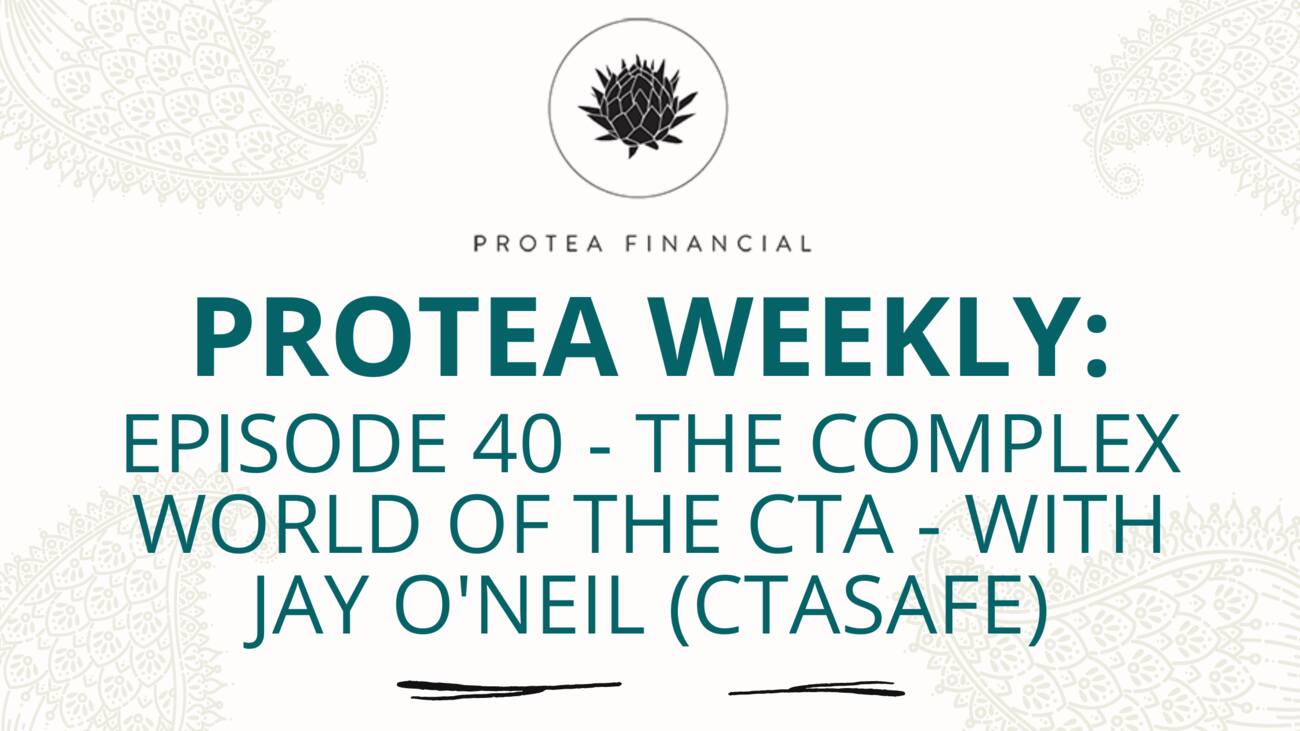In this episode of Protea Weekly, Zane Stevens interviews Jay O’Neill, the CEO of CTA Safe, to discuss the Corporate Transparency Act (CTA).
They highlight the confusion and lack of awareness surrounding the CTA, which was passed in 2021 but is still relatively unknown. The purpose of the CTA is to increase transparency in financial systems and combat illicit activities like money laundering and fraud. They explain the criteria for businesses that are subject to the CTA, including registration with the Secretary of State, gross receipts of $5 million or less, and 20 or fewer employees. They also delve into the reporting requirements, deadlines, and potential penalties for non-compliance. Finally, they discuss the challenges faced by CPAs and attorneys in assisting with CTA filings and the role of third-party service providers like CTA Safe in simplifying the process.
Takeaways
– The Corporate Transparency Act (CTA) was passed in 2021 to increase transparency in financial systems and combat illicit activities like money laundering and fraud.
– Businesses that are subject to the CTA must meet three criteria: registration with the Secretary of
– State, gross receipts of $5 million or less, and 20 or fewer employees.
– Reporting requirements include information about the company, beneficial owners, and company applicants. Updates must be filed within 30 days of any changes.
– Failure to comply with the CTA can result in civil penalties of $591 per day per individual and criminal penalties of a $10,000 fine and two years in prison.
– CPAs and attorneys are hesitant to assist with CTA filings due to the risk of unauthorized practice of law. Third-party service providers like CTA Safe offer software and consulting solutions to simplify the process.
Sound Bites
“It’s an interesting history to the act… There are some fundamental shortfalls in the rollout of this and the underlying assumptions of that rollout that have really proven not to be true.”
“The purpose of the act is to increase transparency in financial systems and combat illicit activities like money laundering and fraud.”
“The three criteria: registered with the Secretary of State, 5 million or less in gross receipts, and 20 or fewer employees.”
Chapters
00:00 Introduction and Background of the CTA
03:06 Importance of Discussing the CTA
07:05 Criteria for Businesses Subject to the CTA
2:59 Definition of Beneficial Owner
19:18 Reporting Requirements and Deadlines
23:02 Penalties for Non-Compliance with the CTA
26:31 Challenges and Solutions for CTA Filings
Connect with CTASafe:



